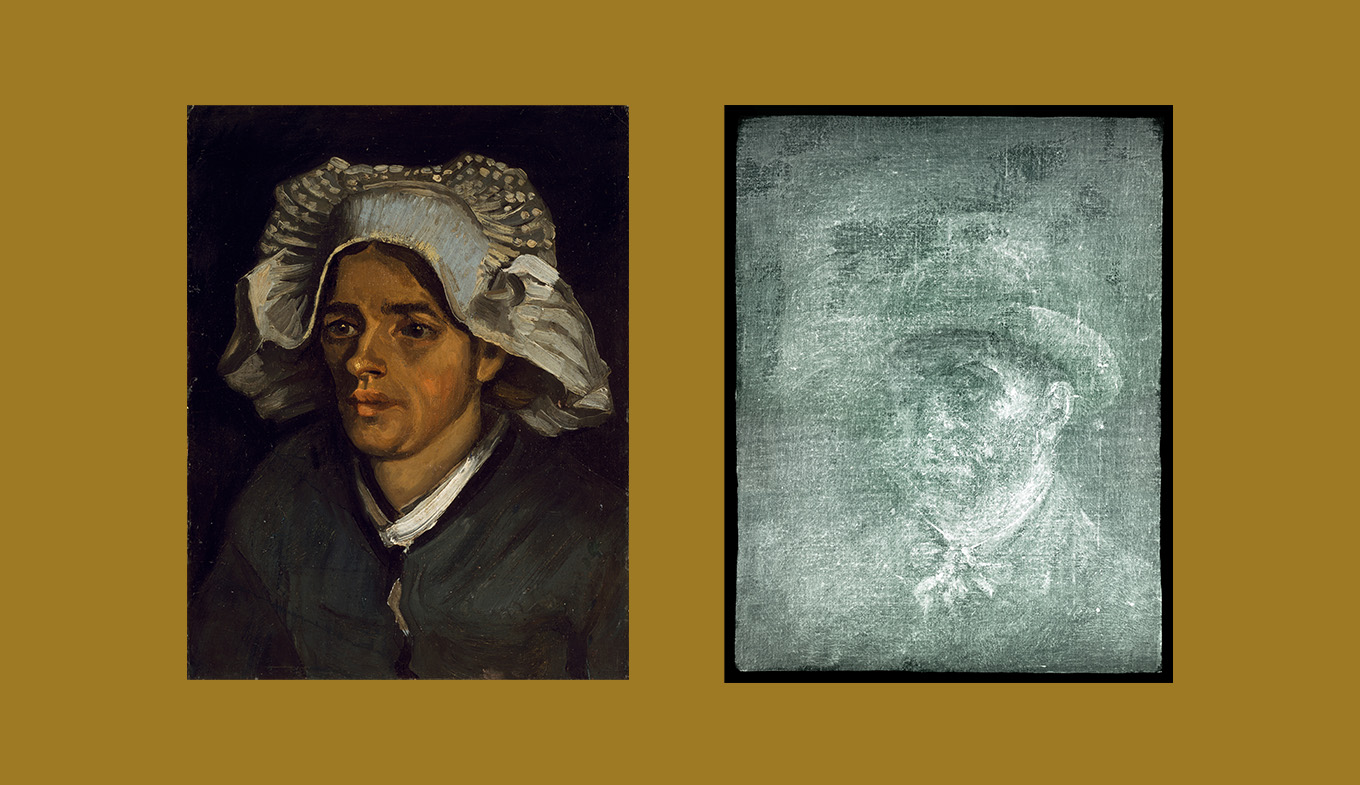
Van Gogh self-portrait discovered - July 20, 2022
Believed to be a first for a UK institution, the mysterious image was revealed by an x-ray taken when art conservators examined Van Gogh’s Head of a Peasant Woman of 1885 ahead of the forthcoming exhibition A Taste for Impressionism at the Royal Scottish Academy, Edinburgh. Visitors will be able to see the amazing x-ray image for the first time through a specially crafted lightbox at the centre of the display.
It may be possible to uncover the hidden self-portrait, but the process of removing the glue and cardboard will require delicate conservation work. Research is ongoing as to how that can be done without harming Head of a Peasant Woman.
Until then, the world can enjoy the tantalising discovery through a ghostly and utterly compelling x-ray image. It shows a bearded sitter in a brimmed hat with a neckerchief loosely tied at the throat. He fixes the viewer with an intense stare, the right side of his face in shadow and his left ear clearly visible.
The condition of the underlying self-portrait is not known but, if it can be uncovered, it is expected to help shed new light on this enigmatic and beguiling artist. Later in date than the Head of a Peasant Woman, the hidden painting is likely to have been made during a key moment in Van Gogh’s career, when he was exposed to the work of the French impressionists after moving to Paris. The experience had a profound effect and was a major influence on why he adopted a more colourful and expressive style of painting – one that is so much admired today.
Watch this video

Dating from an early period in Van Gogh’s career, the painting shows a local woman from the town of Nuenen in the south of the Netherlands, where the artist lived from December 1883 to November 1885.
Painted in March or April 1885, it seems to be a likeness of Gordina de Groot who was a model for Van Gogh’s early masterpiece The Potato Eaters of 1885 (Van Gogh Museum, Amsterdam). Her facial features, white cap and simple work clothes are sketched in oil, using broad brushstrokes and earthy colours typical of French realist artists such as Jean-François Millet, whom Van Gogh greatly admired.
Once revealed, the hidden self-portrait will be part of a group of several such self-portraits and other works painted on the back of earlier canvases from the Nuenen period.
A TASTE FOR IMPRESSIONISM: MODERN FRENCH ART FROM MILLET TO MATISSE
30 July 2022 - 13 November 2022
Royal Scottish Academy